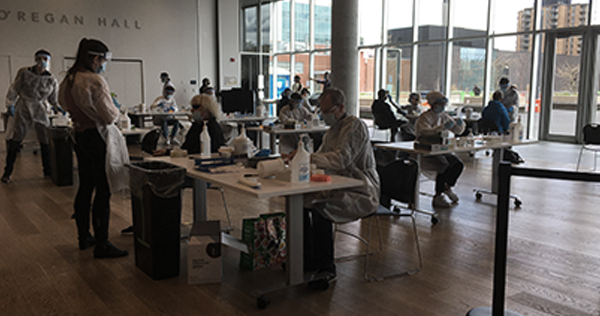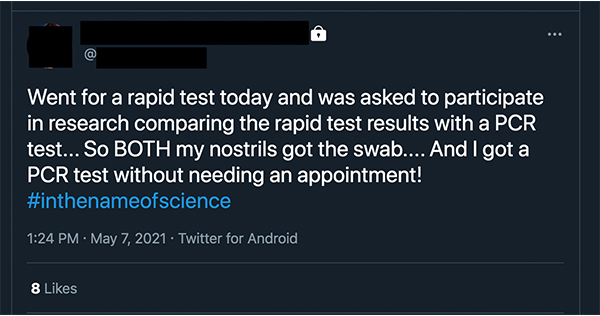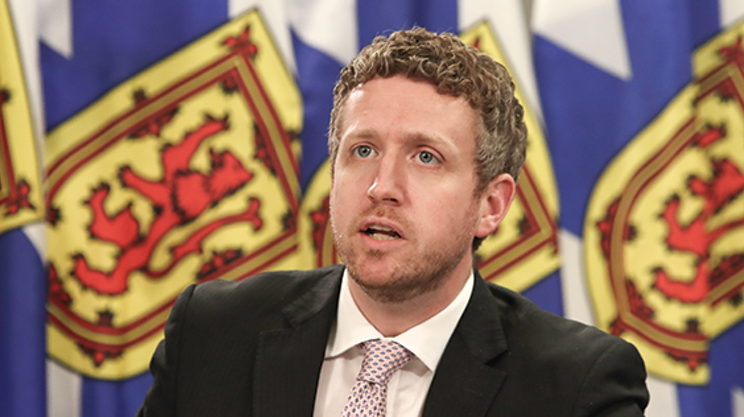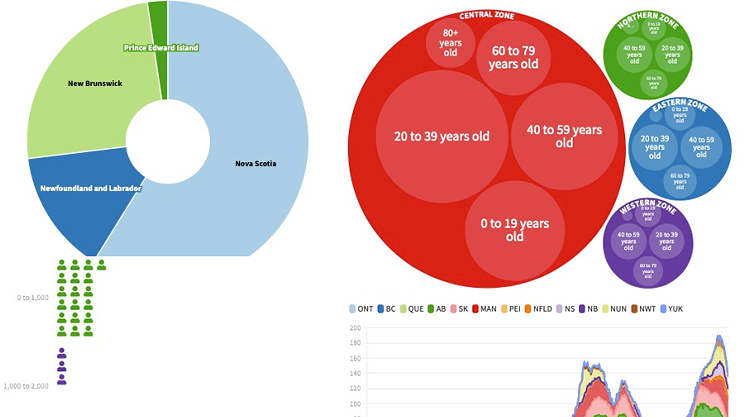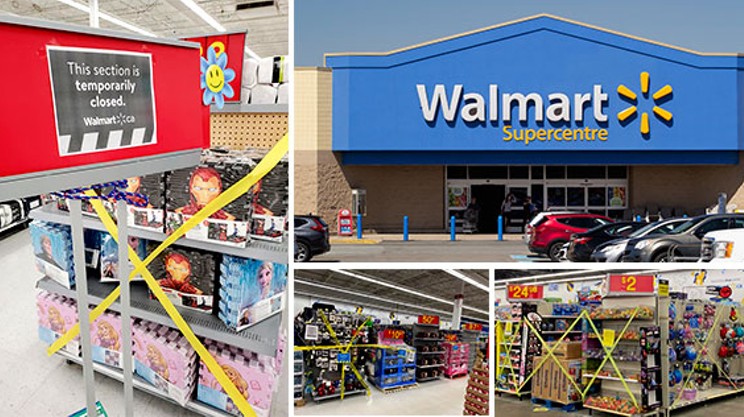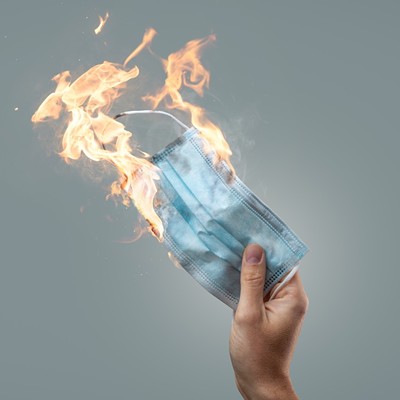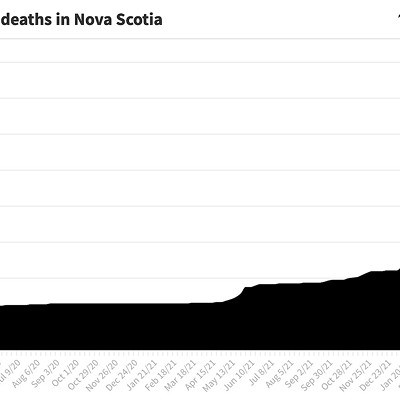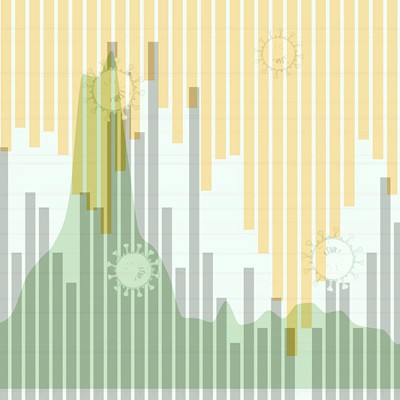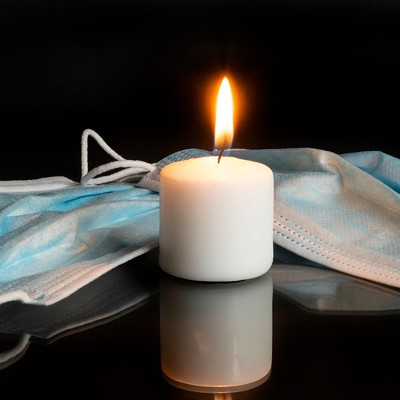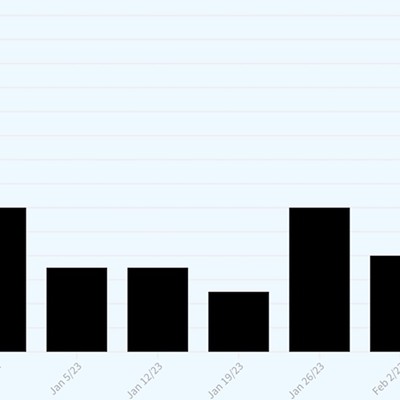Nova Scotia has been a national leader in asymptomatic testing through the pandemic. It was among the first provinces to make rapid tests widely available to anyone who wanted one—even if that person has none of the classic runny nose/headache/fever/cough/sore throat/trouble breathing symptoms of COVID.
The rapid testing program started December 7, 2020, and last month it reached a peak for number of people tested. “At one point, we had hit over 1,900 on one or two days at some of the sites,” says Lisa Barrett, the infectious disease specialist who’s coordinating the pop-up rapid testing at places like the Convention Centre, Central Library and Alderney Gate Library. To date, Nova Scotia has given over 81,000 rapid tests. Ontario has swabbed more than two million noses, but only began that testing in May 2021.
Rapid tests (AKA antigen tests) at pop-up sites are different from the testing happening at primary assessment centres (PACs). The rapid tests come back in 15-30 minutes thanks to a process where, according to the WHO, “if the target antigen is present in sufficient concentrations in the sample, it will bind to specific antibodies fixed to a paper strip enclosed in a plastic casing and generate a visually detectable signal.”
Doctor Barrett breaks it down in simpler terms. “It's a bendy thing that goes into the back of your nose, gathers up some—hopefully—boogers and comes on out,” she says. “It goes into a tiny bit—16 drops, in fact—of fluid and buffer.” After swirling it around in the liquid, five drops of that liquid are deposited on what looks a lot like a pregnancy test, but for COVID. “If one line appears, that means the test worked, but you're negative. And if two lines appear after 15 minutes, then that means that you are positive and need to get a confirmation gold standard test to make sure that it's a real positive.”
That “gold standard test” is a PCR—polymerase chain reaction—test. PCR technology is extremely accurate, but operates on a different time scale from rapid testing. “In most cases, Nova Scotians will receive their test result within 72 hours,” says Nova Scotia Health’s testing info page, although results took a lot longer to get during the recent backlog of 45,000 PCR tests.
Nova Scotia’s rapid test sites are using the Abbott Panbio test, which has a sensitivity or accuracy rate of 91 percent. But this can depend on several factors, including how long a person has been infected, the amount of virus in their body and even human error.
Barrett says the more than 2,300 volunteers who help make COVID testing run smoothly are trained to do it right. “If you only put a swab part way in, you're not going to get as much of it,” she says. “People get back there, that's for sure. You'll be sure it almost hits the back of your throat.”
With growing COVID-19 case numbers, the lab has set out to prove that rapid testing is accurate and effective. Swabbers at pop-up sites have been taking a select portion of attendees and performing a PCR test on that person as well. “It's quality assurance, to make sure that during this time of high virus, to get a better sense of how much virus we're missing or not missing,” says Barrett.
The PCR test is taken right after the rapid test, and the sample is sent to the lab. If both results come back negative (or positive, if the tested person has COVID), public health can be reassured the rapid tests are detecting COVID when present.
The problem would be if the rapid test comes back negative, but the PCR comes back positive—indicating a false negative on a rapid test, something that could lead to unwitting community spread. “It is an important thing to do, to make sure that we're getting real data from the real world, validating the test,” explains Barrett.
In Nova Scotia, anyone whose rapid test comes back positive is already sent for a PCR test to confirm. It’s unclear which PCR tests the province uses, but most of the 40 different PCR tests approved in Canada have a sensitivity rate of 100 percent, with a few outliers reporting between 80 and 99 percent accuracy.
The lab wants to get at least 500 PCR samples, and Barrett expects up to 20 percent of positive cases might get missed the first time around. “It depends on how many positives are in that site that day,” she says. “The less virus that's around, the more tests we'll need to do to make sure we're not missing something.”
Barrett clarifies that if you have symptoms and want a PCR test or need proof of one to travel, you can’t go demand one at a rapid test site. But if you have an “easy nose” as she puts it, you might get selected. “Basically, we're just trying to find people who might have the least discomfort or anxiety about having a second swab done.”

